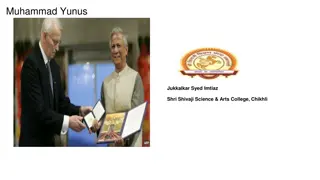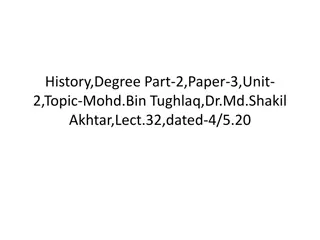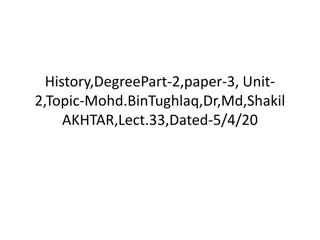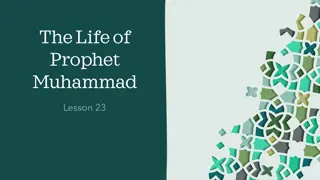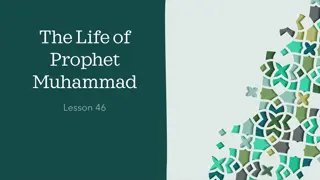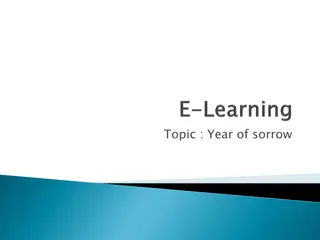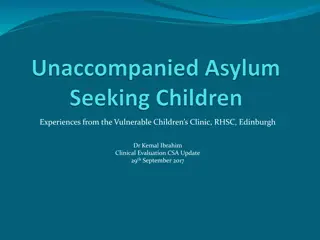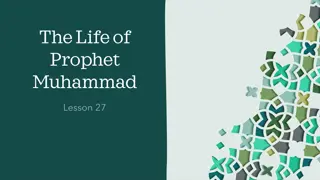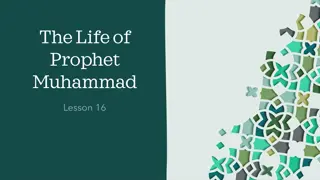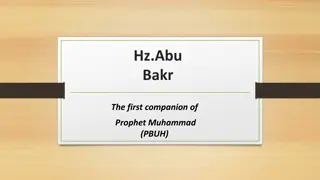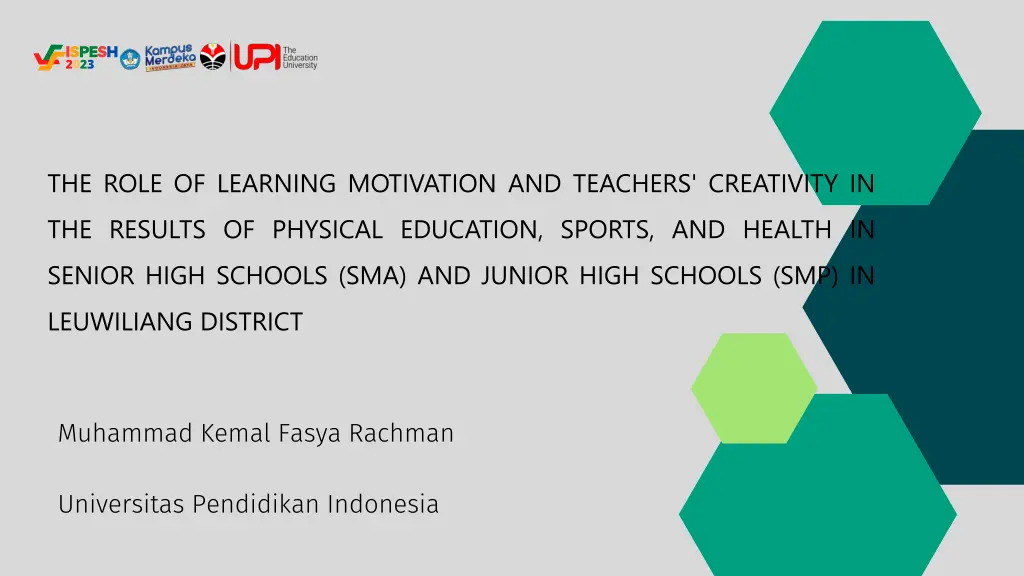
Role of Learning Motivation and Teachers' Creativity in Physical Education Outcomes
Explore the impact of learning motivation and teacher creativity on the results of physical education, sports, and health in senior and junior high schools in Leuwiliang district. Learn how student motivation and teacher creativity influence learning outcomes in physical education, sports, and health programs at schools.
Download Presentation

Please find below an Image/Link to download the presentation.
The content on the website is provided AS IS for your information and personal use only. It may not be sold, licensed, or shared on other websites without obtaining consent from the author. If you encounter any issues during the download, it is possible that the publisher has removed the file from their server.
You are allowed to download the files provided on this website for personal or commercial use, subject to the condition that they are used lawfully. All files are the property of their respective owners.
The content on the website is provided AS IS for your information and personal use only. It may not be sold, licensed, or shared on other websites without obtaining consent from the author.
E N D
Presentation Transcript
ISPESH 2023 THE ROLE OF LEARNING MOTIVATION AND TEACHERS' CREATIVITY IN THE RESULTS OF PHYSICAL EDUCATION, SPORTS, AND HEALTH IN SENIOR HIGH SCHOOLS (SMA) AND JUNIOR HIGH SCHOOLS (SMP) IN LEUWILIANG DISTRICT Muhammad Kemal Fasya Rachman Universitas Pendidikan Indonesia
ISPESH 2023 INTRODUCTION INTRODUCTION Physical Education (PJ) is an important part of the educational process because it helps students become healthy and qualified individuals. Pysical education, sports, and health education in schools aim to achieve educational goals through physical activity. According to Mahendra (2015), Pysical education involves education through physical activities, games, and selected sports. The Pysical education curriculum aims to develop students physically, mentally, emotionally, and socially. Students learn both inside and outside the classroom under the guidance of teachers, gaining self-awareness and understanding of others and their environment (Ariananda et al., 2016). Pysical education uses physical activity to encourage the overall development of the individual, including affective, cognitive, and psychomotor aspects (Mahendra, 2015; Abduljabar
ISPESH 2023 facilitate significant student interaction, promote moral values such as sportsmanship, and provide opportunities to experience social and ethical behavior (Fern ndez-R o et al., 2012). It increases students' motivation for physical activity and contributes to their social skills, self-confidence, and perseverance (Chu & Zhang, 2018). Physical education in sports and health is very important for physical fitness, motor skills, healthy living, sportsmanship, and emotional intelligence (Mashud, 2016). Student motivation, which is important for learning, can increase engagement and learning outcomes (Riyoko, 2019; Fatchurrohman, 2011). Learning motivation is important in school and home environments, aiding in faster skill acquisition and mastery (Sitompul et al., 2018; Dawadi, 2018). Lack of motivation can have a negative impact on learning outcomes (Syahniar & Dwi, 2018; Sudjana, 2009). To improve the learning outcomes of physical education, teachers must create a positive and fun learning environment, recognize students' skills, and provide conditions that support learning (Firmansyah, 2009). This study explores the relationship between learning motivation and teachers' creativity and learning outcomes of physical education, sports and health in high schools and vocational schools in Leuwiliang district.
METHODE This study uses a quantitative approach with correlation techniques to identify relationships between variables. According to Kusumah et al. (2019), Pearson's product-moment correlation is often used to calculate the correlation coefficient between two variables. This coefficient assesses the strength of the relationship between the observed data, assuming the sample population is normally distributed and has two variables. ISPESH 2023 Path analysis was used in this study because of the mediation that affects the relationship between independent and dependent variables. This study examines three variables: learning motivation and creativity of teachers as independent variables, and learning outcomes in physical education, sports, and health as dependent variables. According to Sugiyono (2019), sampling is carried out purposively, where samples are randomly selected from the population without paying attention to strata, resulting in homogeneous samples. This method was chosen to provide an opportunity to members of the population who meet certain criteria to be part of the study. The sampling process includes: a. The sample was selected based on criteria from the Senior High School and Junior High School in Leuwiliang because low student discipline was associated with low motivation in physical education classes. b. Divide students into two groups: boys and girls. c. Ask the same questions to each sample about the learning outcomes of students in high school and junior high school in Leuwiliang. . To collect data on student learning motivation, the researcher adapted the Learning Motivation Strategy Questionnaire (MSLQ) from the journal article "Review of the Motivated Strategies for Learning Questionnaire" by Lazim et al. (Anthony R. Artino, 2005). Each question in the survey provides five alternative answer options. The questionnaire contains statements related to infrastructure and teacher competence using a four- point Likert scale (1 strongly disagrees, 2 disagrees, 3 disagrees, 4 agrees, 5 strongly agrees). To collect data on teacher creativity, researchers adapted the Creativity Fostering Teacher Behaviour Index (CFTIndex) from a study titled "Creativity Fostering Teacher Behaviour Around the World: Annotations of Studies Using the CFT Index" by Soh (2015). In this study, a descriptive statistical approach was used to analyze the data. Furthermore, the data was processed and analyzed using the normality test, homogeneity test, and single-sample T test with SPSS version 26.
ISPESH 2023 RESULTS AND DISCUSSION In the analysis of student motivation data in Leuwiliang District, the average motivation score was found as follows: SMPN 1 Leuwiliang 130.17, SMP PGRI Kracak 129.50, SMA Mandala 134.14, and SMAN 1 Leuwiliang - 127.00. For teachers' creativity in physical education, the average is: SMPN 1 Leuwiliang 152.33, SMP PGRI Kracak 186.00, SMA Mandala 176.33, and SMAN 1 Leuwiliang 196.75. The study found a significant relationship between teacher creativity and student learning outcomes, with a correlation (r) = 0.561 and a coefficient of determination (r ) of 0.314, indicating that teacher creativity contributed 31.4% to student learning outcomes. There was also a significant relationship between student motivation and learning outcomes, with a correlation (r) = 0.270 and a coefficient of determination (r ) of 0.073, which means that student motivation contributed 7.29% to their
ISPESH 2023 Physical education functions as a medium to educate individuals towards a better life, making a significant contribution to daily life (Firmansyah, 2009). Highly creative teachers can motivate students to engage in learning. According to Sardiman (2018:75), learning motivation is "the overall driving force in students that produces learning activities, ensures the continuity of learning activities and provides direction for these activities so that the desired learning goals can be achieved." Learning motivation means the drive from within students to achieve learning goals, such as understanding the material or developing learning skills. With motivation, students will continue to strive to learn without any external pressure. .
CONCLUSION ISPESH 2023 Based on the data and research findings, it can be concluded that there is a significant relationship between learning motivation and creativity of teachers and physical education learning outcomes in high school (SMA) and junior high school (SMP) in Leuwiliang District.
ISPESH 2023 THANKYOU
REFERENCE ISPESH 2023 Ariananda, E. S., Hasan, S., & Rakhman, M. (2016). Pengaruh Kedisiplinan Siswa Di Sekolah Terhadap Prestasi Belajar Siswa Teknik Pendingin. Journal of Mechanical Engineering Education, 1(2), 233. https://doi.org/10.17509/jmee.v1i2.3805 Mahendra, A. (2015). Filsafat Pendidikan Jasmani. Abdul Rahman Shaleh. (2008). Psikologi Suatu Pengantar dalam Perspektif Islam. Kencana. Abduljabar, B. (2011). Pengertian pendidikan jasmani. Ilmu Pendidikan, 1991, 36. Andi Suntoda Situmorang. (2009). Prodi Pendidikan Jasmani Kesehatan dan Rekreasi Jurusan Pendidikan Olahraga Fakultas Pendidikan Olahraga dan Kesehatan. Universitas Pendidikan Indonesia Bandung. Anthony R. Artino, J. (2005). Review of the Motivated Strategies for Learning Questionnaire. 7(2), 147 173. Appova, A., & Arbaugh, F. (2018). Teachers motivation to learn: implications for supporting professional growth. Professional Development in Education, 44(1), 5 21. https://doi.org/10.1080/19415257.2017.1280524 Ariananda, E. S., Hasan, S., & Rakhman, M. (2016). Pengaruh Kedisiplinan Siswa Di Sekolah Terhadap Prestasi Belajar Siswa Teknik Pendingin. Journal of Mechanical Engineering Education, 1(2), 233. https://doi.org/10.17509/jmee.v1i2.3805 Arifani, Y., Khaja, F. N. M., Suryanti, S., & Wardhono, A. (2019). The Influence of Blended In-service Teacher Professional Training on EFL Teacher Creativity and Teaching Effectiveness. 3L: Language, Linguistics, Literature, 25(3), 126 136. https://doi.org/10.17576/3L-2019- 2503-10 Care, J. C., & Care, J. C. (2017). Judul artikel lengkap. 1, 36 49. Chu, T. L. (Alan), & Zhang, T. (2018). Motivational processes in Sport Education programs among high school students: A systematic review. European Physical Education Review, 24(3), 372 394. https://doi.org/10.1177/1356336X17751231 D. Deni Koswara Halimah. (2008). Bagaiman Menjadi Guru Kreatif? Pribumi Mekar. Dawadi, S. (2018). The Impact of the School Leaving Certificate Examination on English Language Teaching and Student Motivation to Learn English Book Section. In Hayes, David ed. English Language Teaching in Nepal: Research, Reflection and Practice. British Council. De Silva, A. D. A., Khatibi, A., & Ferdous Azam, S. M. (2018). Do the Demographic Differences Manifest in Motivation to Learn Science and Impact on Science Performance? Evidence from Sri Lanka. International Journal of Science and Mathematics Education, 16, 47 67. https://doi.org/10.1007/s10763-017-9846-y Ellin Karlina, F. R. (2020). Penerapan Metode Pembelajaran Team Teaching Dalam. Research and Development Journal Of Education, 6(2), 65 73.




